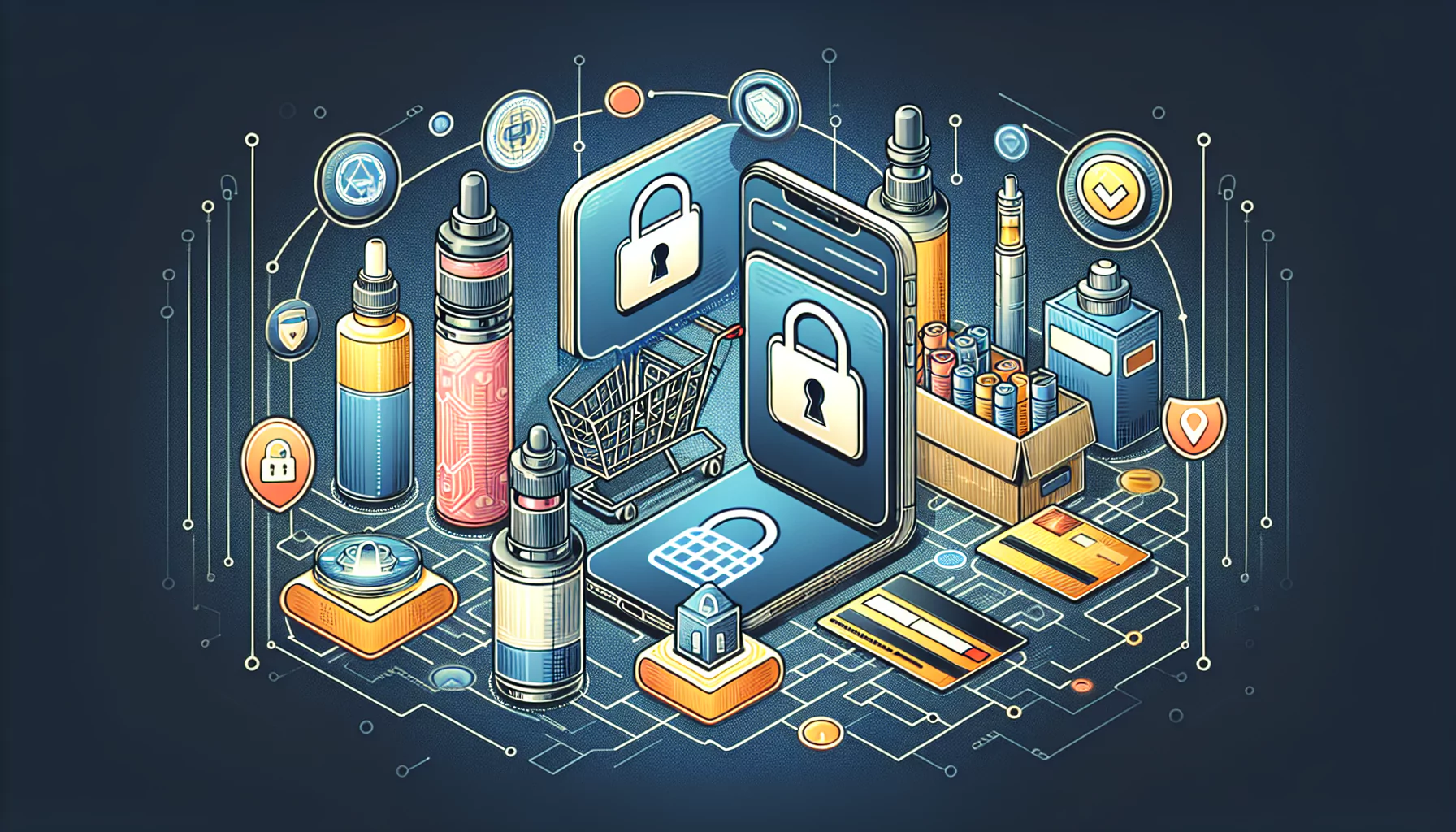by Spark Payments
Share
by Spark Payments
Share
Ensuring Security: A Complete Guide to Merchant Services PCI Compliance

Grasping the concept of merchant services PCI compliance is vital for each and every business that processes card payments. This key security measure is obligatory to protect sensitive card data and steer clear of severe fines. Our guide cuts through the complexity, providing a straightforward walkthrough of PCI DSS requirements, how to achieve compliance, and the consequences of failure to do so.
Key Takeaways
- PCI DSS compliance is mandatory for all businesses that accept credit card payments, focusing on protecting cardholder data across twelve detailed requirements.
- Achieving PCI compliance is a structured process involving assessing vulnerabilities, remediating security issues, and reporting to the acquiring banks and payment brands.
- Non-compliance with PCI DSS can result in severe financial fines, reputational damage, and legal repercussions, highlighting the significance of complying with the security standards.
Understanding Merchant Services and PCI Compliance
Merchant services encompass the financial services that enable businesses to accept card payments from customers. Among these services, a key factor ensuring the security of these transactions is PCI compliance. The Payment Card Industry Data Security Standard (PCI DSS) is designed to ensure the security of credit card information for companies that handle it. It establishes measures for maintaining a secure environment when processing, storing, or transmitting this sensitive data. Irrespective of the transaction volume, it is mandatory for every business accepting credit card payments to comply with these standards, especially when they transmit payment data.
These standards, which the PCI Security Standards Council manages PCI security standards, comprise twelve high-level requirements with detailed sub-requirements, aiming to guide businesses on how to protect cardholder data according to the PCI Data Security Standard.
Achieving a secure payment environment requires diligent efforts, including:
- Training employees
- Hiring trustworthy partners
- Managing payment data
- Maintaining a secure environment.
Businesses demonstrate their commitment to security by co-branding with PCI Data Security Essentials and ensuring their vendors take measures to protect customer payment data.
The Role of PCI DSS in Credit Card Transactions
In securing credit card transactions, PCI DSS plays a dominant role. As a requirement by major card brands, PCI DSS ensures the safe handling of both credit and debit card transactions, safeguarding cardholder data. One of the key guidelines is that merchants should avoid storing cardholder data unless necessary for business needs, and even then, data display limitations are specified to protect sensitive information.
Adherence to PCI DSS involves implementing twelve key security requirements, including firewalls, password policies, data encryption, and antivirus software, to mitigate risks in credit card transactions. Businesses are also required to control access to cardholder data, allowing only necessary personnel access, assigning unique IDs for each person with computer access, and restricting physical access to cardholder data. These measures ensure a secure environment for card transactions, effectively safeguarding sensitive information.
Steps to Achieving PCI Compliance for Your Business
Achieving PCI compliance is not an overnight task. It involves a methodical, three-step process: assessing risks and vulnerabilities, remediating security issues, and submitting compliance reports to acquiring banks and payment brands.
Let’s delve deeper into each of these steps to understand what they entail.
ASSESS: Identifying Risks and Vulnerabilities
The journey towards PCI compliance starts with a comprehensive assessment of your business operations. A PCI SSC Qualified Security Assessor (QSA) or an Internal Security Assessor (ISA) conducts a thorough evaluation. This evaluation is detailed and comprehensive. The initial phase of ensuring PCI compliance involves evaluating payment processing systems for potential security weaknesses.
Small businesses, when not required to undergo a full PCI DSS assessment, have the option to use the Self-Assessment Questionnaire (SAQ) as a tool to self-assess their PCI DSS compliance. This assessment phase is crucial as it allows businesses to identify any loopholes in their security measures, paving the way for remediation steps.
REMEDIATE: Addressing and Fixing Security Issues
After identifying potential security vulnerabilities, the next step is remediation. PCI DSS requires that all stored information be made unreadable via methods like encryption, effectively safeguarding it from unauthorized access. Methods such as:
- encryption
- tokenization
- truncation
- masking
- hashing
Strong security measures are recommended to protect cardholder data and payment card data, rendering the data useless even if stolen.
However, PCI DSS discourages the unnecessary storage of cardholder data and strictly prohibits storing sensitive authentication data such as unencrypted credit card numbers and CVV/CVV2. While remediation ensures secure transactions and helps to safely transmit cardholder data, it’s important to note that it may incur costs, ranging from modest hardware updates to more substantial investments in managing stored cardholder data.
REPORT: Completing and Submitting Compliance Reports
The final step in achieving PCI compliance is reporting. After successfully assessing and remediating security vulnerabilities, businesses are required to compile and submit evidence of compliance to their acquiring banks and the relevant payment brands. The requirements for reporting vary based on the merchant’s compliance level. For instance, Level 1 merchants are required to submit an Attestation of Compliance form to declare adherence to PCI DSS standards.
Merchants with Level 1 compliance status must also complete a quarterly network scan by an approved vendor and an annual penetration test. The role of managing a merchant’s PCI compliance and reporting the status to payment brands such as Mastercard is entrusted to the acquiring bank. While reporting may seem like a daunting task, it’s a critical step in ensuring the business’s commitment to secure transactions.
The Importance of Maintaining Ongoing PCI Compliance
Achieving PCI compliance is not a one-time event but a continuous, across-the-board business effort. It extends beyond the initial certification to ensure ongoing protection of cardholder data. Annual PCI compliance assessments are mandated, with more rigorous requirements for third-party audits for larger enterprises, ensuring that businesses regularly confirm their compliance and security measures.
Keeping up with the latest PCI DSS guidelines helps businesses address evolving cybersecurity threats and uphold the confidentiality and integrity of cardholder data. Businesses must also be proactive in their security practices, such as the use of strong passwords, secure remote access, and timely software updates, to mitigate the risk of payment data breaches. These practices are critical in protecting against continually emerging security threats, including malware, phishing, and skimming, which can compromise cardholder data.
Impact of Non-Compliance on Merchant Services
While there are numerous benefits to being PCI compliant, the impact of non-compliance can be severe. Non-compliance with PCI DSS standards can result in significant fines from card networks and monthly non-compliance fees from merchant services, ranging from thousands to millions depending on the size of the business. High-profile cases such as Target and Home Depot, facing financial penalties due to PCI DSS non-compliance, underscore the severity of these fines, which can include multi-million dollar settlements.
In addition to financial penalties, non-compliance can lead to reputational damage and a significant loss of trust, causing potential loss of customers and business partners. The survival of small businesses post a data breach is jeopardized, with many ceasing operations, highlighting the reputational impact of compromised cardholder data. Legal repercussions for non-compliance can involve lawsuits and government actions, leading to additional financial penalties and long-term damage to business reputation.
Navigating PCI DSS Compliance Levels for Merchants
Understanding the different levels of PCI compliance is crucial for businesses. Businesses are categorized into four levels of compliance based on annual card transaction volume. Level 1 compliance applies to merchants processing over 6 million transactions per year and mandates an annual report by a Qualified Security Assessor or an Internal Security Assessor. Level 2 merchants process between 1 million and 6 million transactions annually and are required to complete a Self-Assessment Questionnaire, with a possible onsite audit if necessary.
For businesses handling 20,000 to 1 million transactions per year, Level 3 compliance is designated, necessitating the completion of a Self-Assessment Questionnaire and quarterly network scans. On the other hand, Level 4 is for merchants with fewer than 20,000 transactions annually and involves fulfilling requirements like a Self-Assessment Questionnaire and quarterly vulnerability scans. The specific requirements for validation of compliance depend on the size of the business and the volume of card transactions processed.
Cost Implications of PCI Compliance for Merchants
While achieving and maintaining PCI compliance is crucial, it’s equally important to understand the associated costs. The cost implications of PCI compliance vary depending on the company’s type, size, and the specific compliance level required. For small businesses, annual PCI DSS compliance costs can start from around $300, while large enterprises may face costs exceeding $70,000 for a comprehensive PCI DSS assessment.
Additionally, some payment processors may charge an annual PCI compliance fee that may grant access to additional services like compliance consultants. It’s also worth noting that payment service providers may assume some PCI compliance responsibilities, which can reduce the cost and effort businesses need to invest in compliance.
Leveraging PCI SSC Resources for Compliance Assistance
In the journey towards PCI compliance, businesses are not alone. The PCI SSC offers a myriad of resources to assist organizations in securing their payment environments and achieving compliance. Guidance documents, including formats for truncation of card numbers and latest PCI DSS documents, can be accessed in the PCI SSC’s document library.
Small merchants and service providers can utilize Self-Assessment Questionnaires provided by the PCI SSC. Also, individuals can find industry-specific job postings on the Community Job Board. By leveraging these resources, businesses can stay informed of security standards updates and engage with industry experts through PCI SSC’s events, blog, and community meetings.
Optimizing Your Payment Gateway for Secure Transactions
A PCI-compliant payment gateway is an asset for any business. A payment gateway that adheres to the PCI DSS ensures the implementation of robust security measures such as firewalls and encryption, protecting cardholder data. Robust key management practices are crucial for the security of encryption methods as outlined by PCI DSS, highlighting the importance of maintaining high levels of security within payment gateways.
A PCI DSS compliant payment gateway offers several benefits:
- Ensures a high level of transactional security
- Enhances customer trust
- Builds customer loyalty
- Enhances the customer experience
- Allows for secure transactions
Customers are more likely to trust businesses that accept credit cards and choose PCI-compliant payment gateways, knowing that their data is protected against cyber threats.
Common Misconceptions About PCI Compliance
There are several misconceptions surrounding PCI compliance. A common misconception is that PCI DSS is only an industry guideline with no legal enforcement. In reality, certain U.S. states have incorporated parts of PCI DSS into their laws, making compliance not only a security best practice but also a legal requirement to avoid penalties.
This makes it clear that PCI compliance is not just about following industry guidelines, but it’s also about legal adherence. Therefore, businesses should prioritize PCI compliance, not only to ensure secure transactions but also to avoid potential legal repercussions.
Summary
In conclusion, PCI compliance is not just a desirable standard but a crucial requirement for businesses handling cardholder data. It ensures the security of credit card transactions, protects sensitive information, and enhances customer trust. While achieving and maintaining PCI compliance involves a methodical process and certain costs, the benefits far outweigh these efforts. Remember, non-compliance can result in significant fines, reputational damage, and potential loss of customers. So, make PCI compliance a priority in your business strategy.
PCI Compliance Frequently Asked Questions
What is PCI compliance?
PCI compliance is about following the Payment Card Industry Data Security Standard to maintain a secure environment for processing credit card information.
What are the steps to achieving PCI compliance?
To achieve PCI compliance, you need to assess risks, address security issues, and submit compliance reports to acquiring banks and payment brands. This three-step process is crucial for meeting the requirements.
What is the role of PCI SSC?
The role of PCI SSC is to manage PCI DSS standards and provide educational resources to help organizations secure their payment environments.
What are the consequences of non-compliance?
Non-compliance with PCI DSS can lead to substantial fines, damage to reputation, and potential loss of customers and business partners. It’s crucial to adhere to the standards to avoid these consequences.
What are the different levels of PCI compliance?
PCI compliance levels are determined by a business’s annual card transaction volume, with specific requirements varying for each level.
Introduction to Smoke Shop Payment Processing In the rapidly evolving world of retail, smoke shops face unique challenges, especially when it comes to payment processing. This guide is designed to provide an in-depth understanding of the intricacies of payment processing tailored for smoke shops, ensuring seamless transactions and enhanced customer satisfaction. Understanding the Smoke Shop
Finding a gun friendly credit card processor is essential for firearm businesses operating in a high-risk industry. This article outlines practical solutions for choosing a processor that is compliant, understands the unique demands of the industry, and integrates with specialized software to streamline your operations. Key Takeaways Firearms businesses require specialized gun-friendly credit card processors
Securing a vape friendly merchant account is key to a successful vape shop, especially considering the industry’s high-risk status. This article delivers straightforward guidance on choosing a merchant account provider that meets your unique needs, from tackling regulatory challenges to minimizing chargeback rates. Gain insights on what features to look for and how to ensure
What are merchant services? They are the backbone of payment processing for businesses, allowing seamless transactions via credit, debit, and electronic payments. In this article, we will clarify how these services work, the variety they come in, and their role in your business’s financial ecosystem. We’ll guide you through selecting a merchant services provider without







